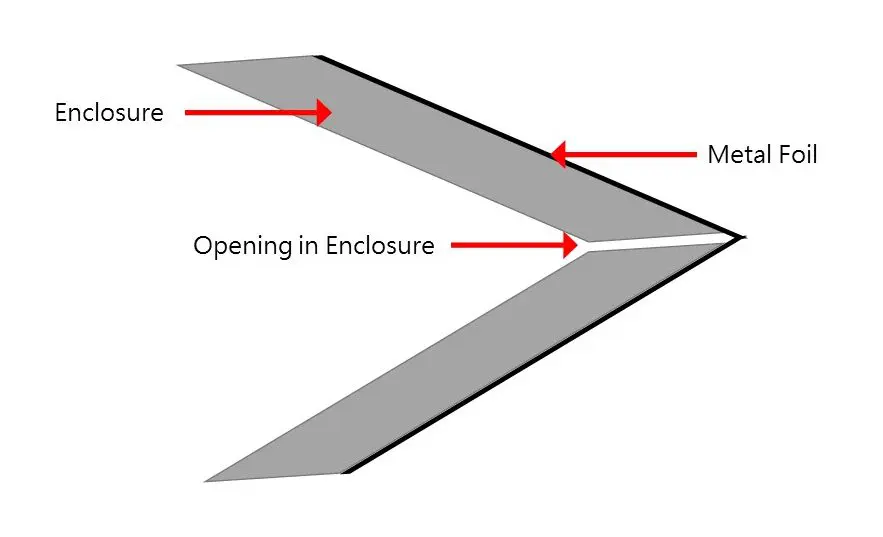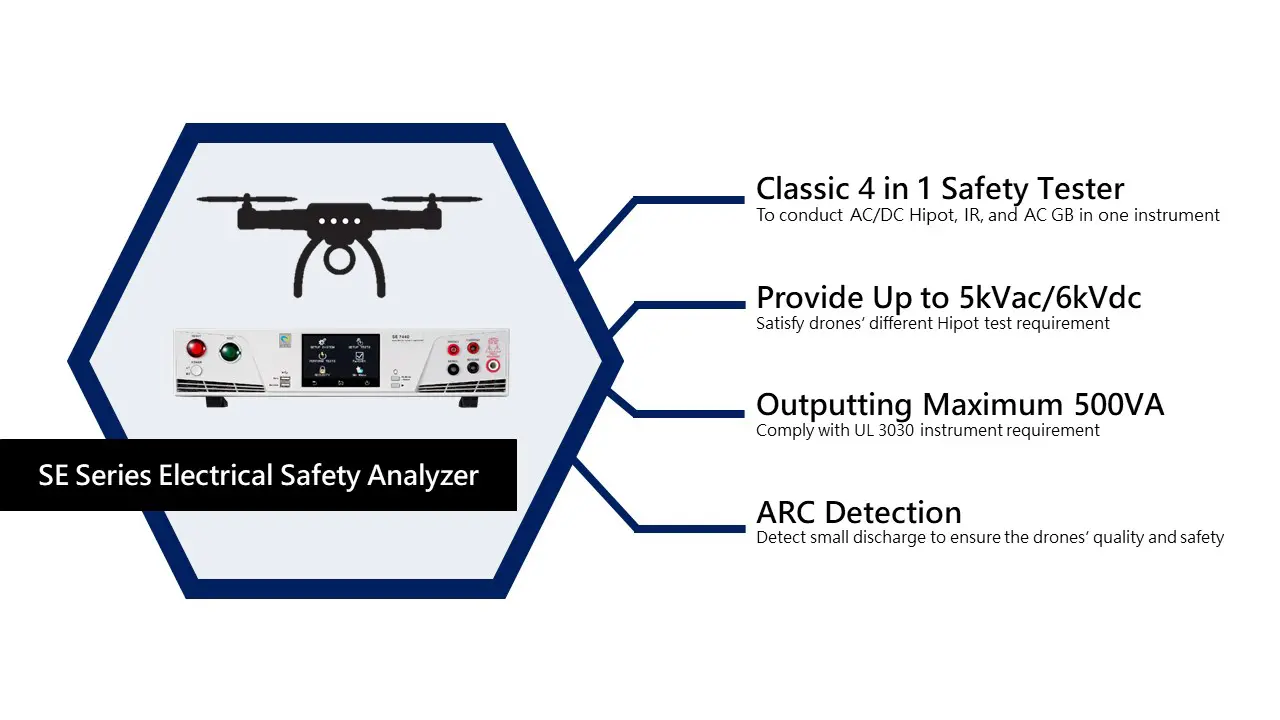
Drone Standards and testing methods
UL 3030 (Standard for Unmanned Aircraft Systems) is specific for commercial-use drones under 25 kg. If the drones fail the safety certification, the poor insulation will cause electrical and fire hazards and more serious impacts. As the drones are optimized for longer flights and heavier lifts, the power usage is also increasing. Therefore, UL 3030 requires the motors and drones’ circuits that use higher than 60Vdc (which is called dangerous voltage) must pass the electrical safety testing.
Motor
For the motor that uses higher than 60Vdc, the UL 3030 requires it must comply with UL 1004 (Standard for Safety Rotating Electrical Machines). The testing requirements and methods are in the following:
Hipot Test
The long-running operation, lighting strikes, and malfunction may cause the voltage beyond the rated value. Therefore, the motor must pass the Hipot test to ensure it can withstand abnormal high voltage. The testing voltage usually uses 2000Vdc for 1 minute, and it should not breakdown.
Ground Bond Test
Under the single fault condition, the fault current should flow to the ground to avoid injury to operators and the drones. Therefore, the GB test should use the maximum rated current, and the resistance should be less than 0.1 ohms.

Figure 1: Electrical Safety Tests for the Motor
In issue 16, we have further introduction about UL 1004. Click to learn more.
Circuits of the Drones
For the drones’ circuit that uses higher than 60Vdc, the UL 3030 the following electrical safety testing:
Hipot Test
This test is to evaluate the circuits that use higher voltage have insulation capability to avoid electrical hazards. The testing voltage can be different by connecting to DC and AC voltage. If it is connected to the DC voltage, use twice the rated DC voltage. Else, use 1000Vac plus twice the rated AC voltage. When conducting the Hipot test, the HV lead connects to the circuit, and the return lead connects to the accessible non-current-carry part. If the accessible part cover with insulation material, it needs to be wrapped with metal foil. During 1 minutes test, it should not occur the breakdown. The tester must have more than 500VA capacity or come with a voltage meter to measure the output voltage.
One thing that needs to be noticed is the metal foil should wrap any opening of the enclosure. Because when the insulation fails, those points may cause accident electric shock. Please refer to the following figure:

Figure 2: The Metal Foil should Wrap Opening in Enclosure
Insulation Resistance Test
To ensure the drones’ insulation design isolated dangerous voltage circuits and accessible conductive parts properly, use 500Vdc to conduct the test. The HV lead connects to the drone circuit positive terminal, and the return lead connects to the accessible conductive part. After 1 minute, the insulation resistance should be at least 50000 ohms.

Figure 3: Electrical Safety Tests for the Drone’s Circuit
Completed Testing Solution for Drones
Leading companies all selected the SE series electrical safety analyzer to conduct the drones’ electrical safety testing. Inherited Ikonix legendary 4 in 1 design, SE series can carry out AC/DC Hipot, Insulation Resistance, AC Ground Bond tests. It provides up to 5kVac and 6kVdc Hipot test voltage that can meet the testing requirement of different parts of the drone. Maximum output power can reach 500 VA comply with UL 3030 safety tester’s requirement. Also, the arc detection function can detect small abnormal discharges. Overall, the SE series can be used for the motors and circuits of drones’ electrical safety tests and strictly ensures the quality and safety of the drone.

Ikonix has more than 80 years of industry experience, deep roots in electrical safety testing, and continually cooperates with labs. We provide complete solutions for manufactures to ensure the safety of the drone and the smart city development. If you would like to learn more about the Ikonix testing solution or have any further questions, click here.




